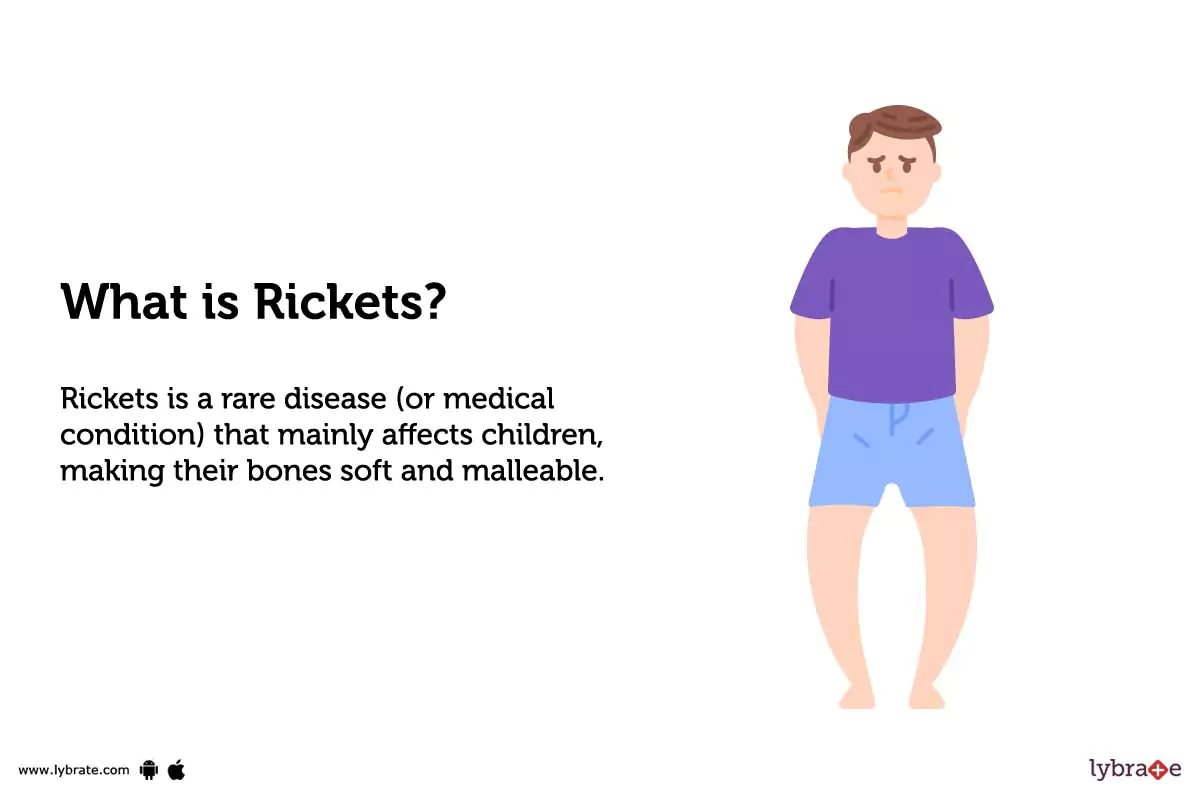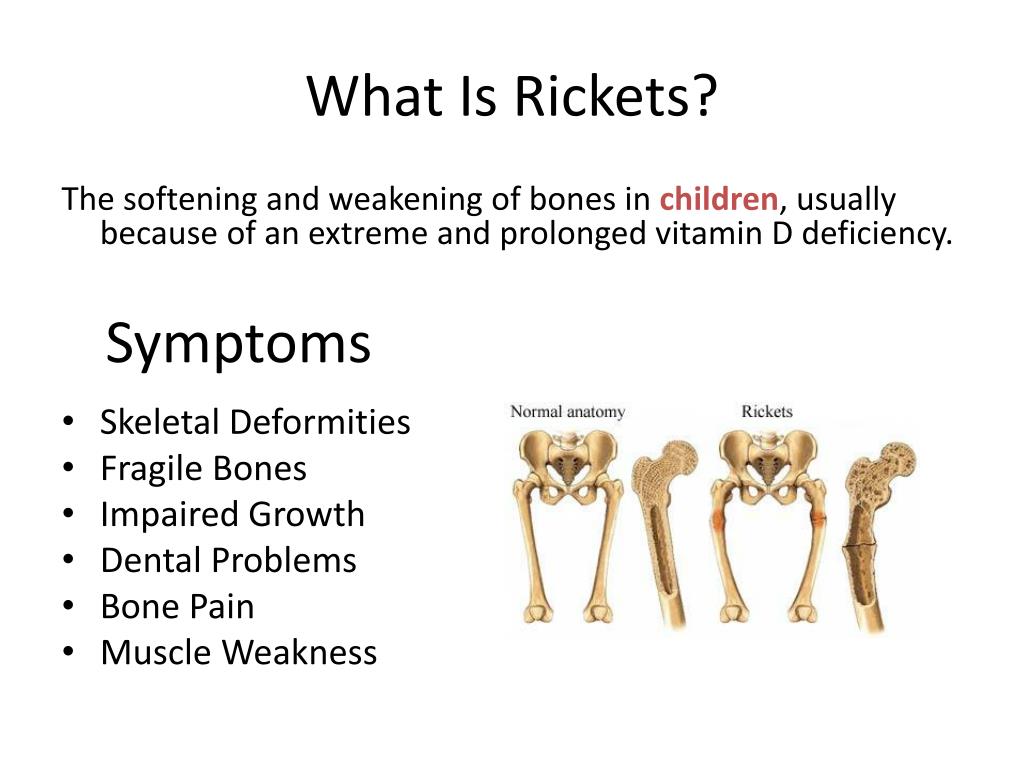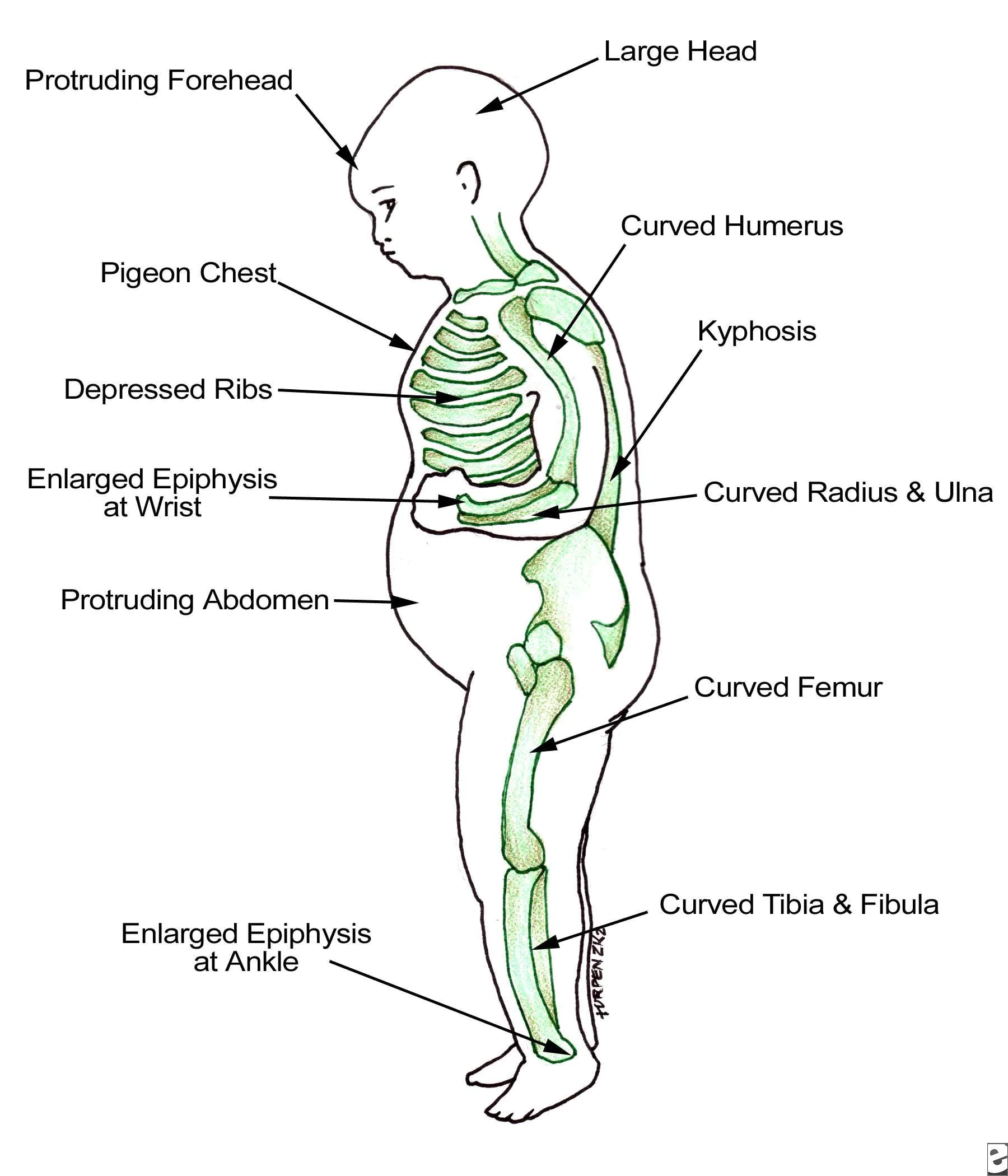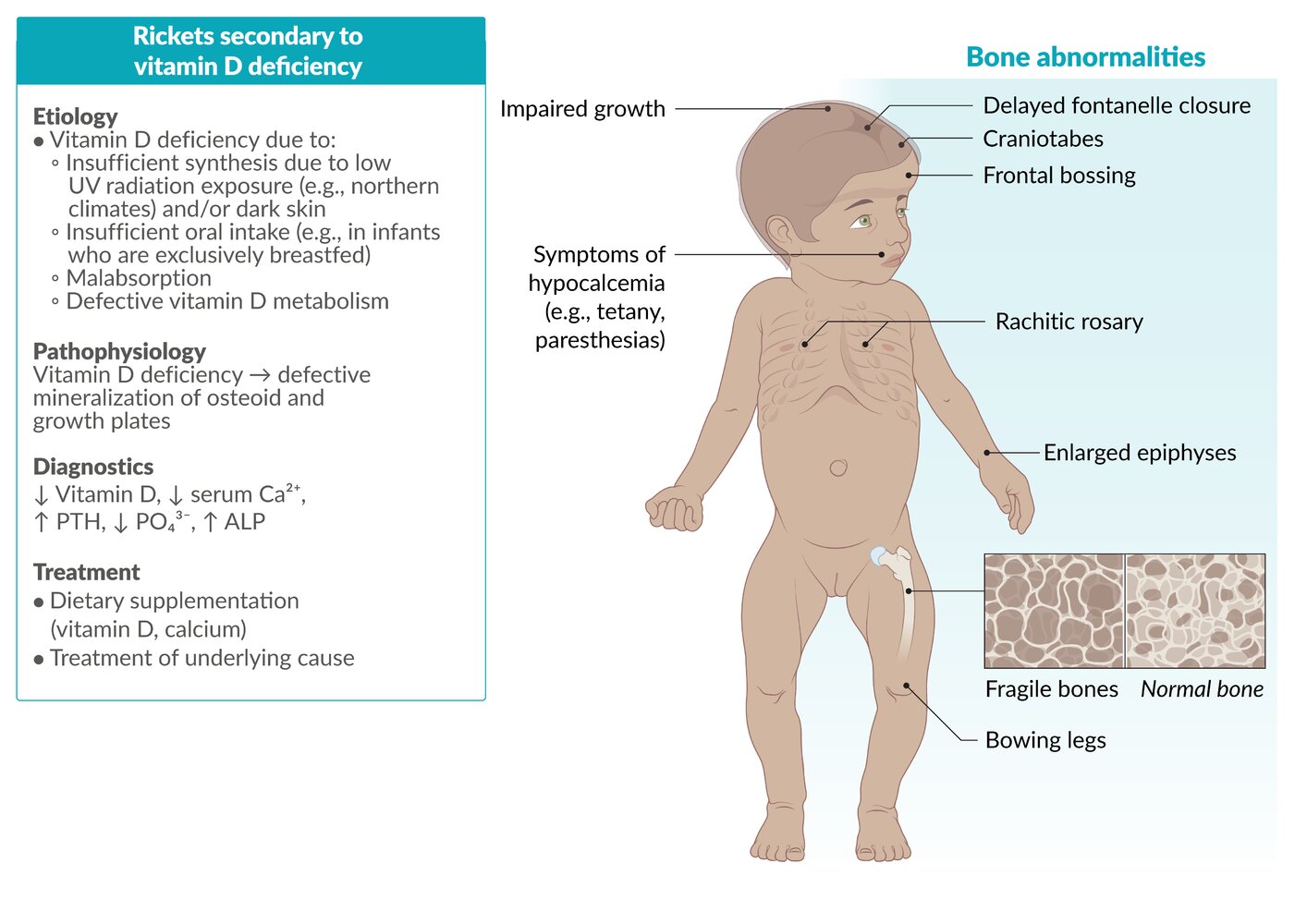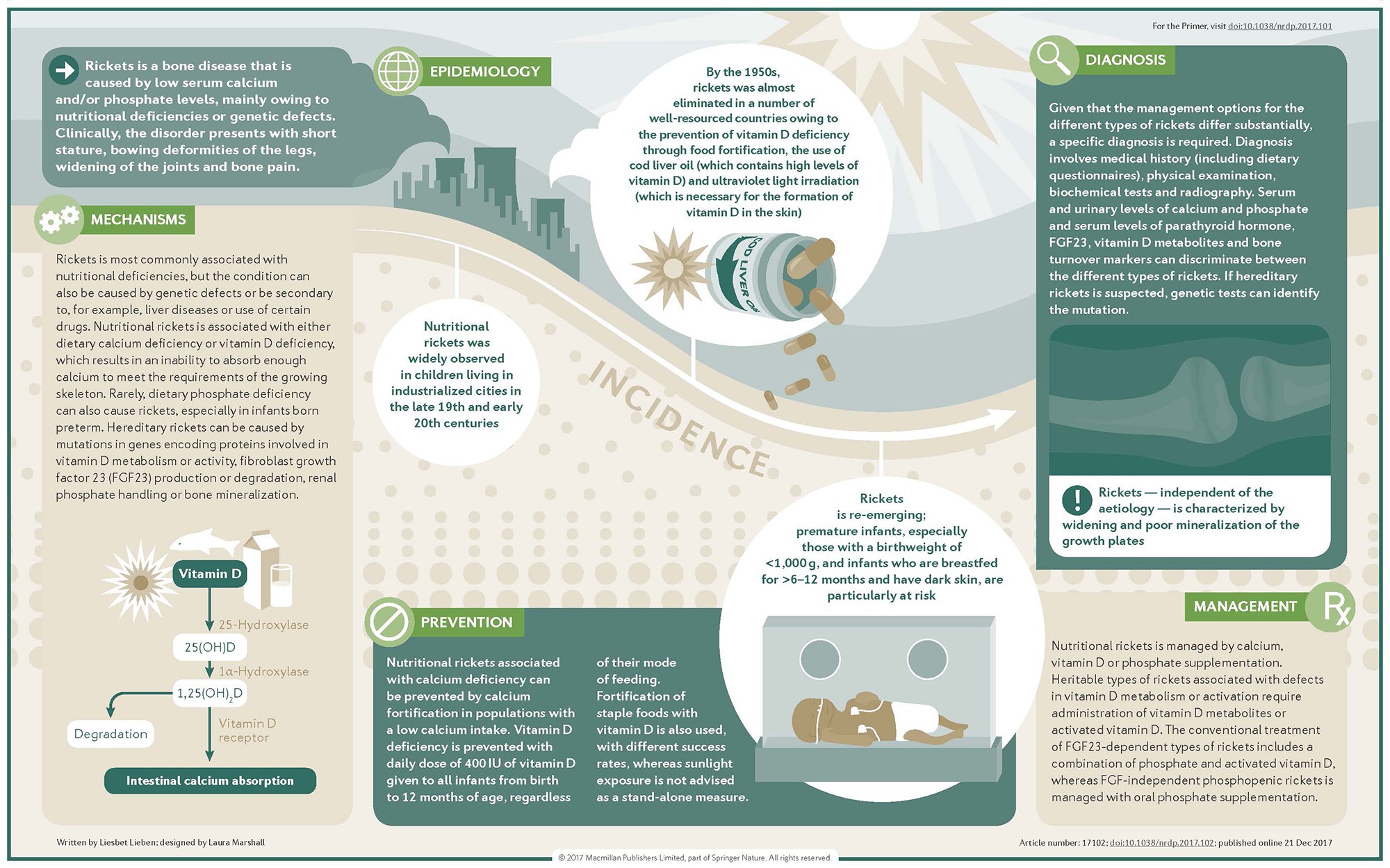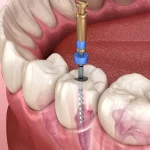
What is rickets?
Rickets is a preventable bone disease that causes the bones to be soft and weak. It occurs in children, and occasionally teenagers, but not adults. If a child has soft bones, the bones can bend slightly into an abnormal shape.
What are the symptoms of rickets?
Children with rickets might:
- be slow to have the front fontanelle (the soft part at the top of a baby’s head) close
- be slow to grow
- be slow to crawl and walk
- have teeth that grow late and have poor quality enamel
- have bow legs, knock knees or legs that aren’t straight
- have swollen wrists, knees and ankles
- have muscle cramps or seizures due to low calcium levels
- break their bones very easily
- have slightly bowed legs up to the age of 2, and it is common for kids to be a little knock-kneed around the age of 4
What causes rickets?
Rickets is usually caused by low levels of vitamin D and only occurs in children (and occasionally teenagers) while they’re growing.
Healthy bones are vital to a child’s physical growth and development. Eating the right foods and getting enough sunshine helps their bones develop and avoids potential problems, including the development of rickets.
Low calcium or low phosphate levels may also play a role in causing the condition, as these minerals are required for bone strength. Calcium and phosphate are minerals that are mostly found in milk and dairy foods. Some kidney problems might also cause rickets by making it harder for the body to absorb and use calcium and phosphate.
Rickets is not common in Australia and people who live here, and who have it, are usually children who have migrated from overseas. Those most at risk of developing rickets include:
- children with very dark skin (because the dark pigment in their skin acts as a type of natural sunscreen, making it hard for them to absorb the sunlight needed to make vitamin D)
- children of pregnant women who stayed indoors or wore veiled clothing throughout their pregnancy
- children with liver disease, kidney disease or problems absorbing food due to cystic fibrosis, coeliac disease or inflammatory bowel disease
- breastfed babies whose mothers are low in vitamin D
How is rickets diagnosed?
See your doctor if you’re concerned about any aspect of your child’s development.
If your doctor suspects rickets, your child will need to have a blood test to check their Vitamin D, calcium and phosphate levels, and kidney function. They might also need x-rays to check how well their bones are growing. They might be referred to a paediatrician, a doctor who specialises in the health of children.
How is rickets treated?
Your doctor will recommend changes to your child’s diet, and might also recommend supplements to make sure they have all the vitamin D, calcium and phosphate they need.
If your child has very low calcium, they will need to go to hospital to receive treatment and have their heart checked.
Can rickets be prevented?
You can help prevent your child from getting rickets if you do the following:
- If you are pregnant, make sure you see a midwife or doctor regularly during the pregnancy.
- Have your vitamin D levels checked during your pregnancy, and have your child’s levels checked if there are any concerns.
- Take any medication that has been prescribed.
- Introduce solid foods when your baby is 4 to 6 months old.
- Make sure your child has enough calcium and phosphate in their diet — The Australian Guide to Healthy Eating provides a good idea of which foods your child needs for healthy growth.
- Spend time outside in the sunshine to prevent your vitamin D level from dropping. The amount of time you need outside will depend on how dark your skin is and where in Australia you live. People with very dark skin may require more sun exposure than people with fair skin to achieve the same levels of vitamin D.
Food only provides a small amount of vitamin D. The best way for your child to get more vitamin D is to get more sunlight, but remember to be SunSmart and take precautions in the sun.
It’s important to find a balance between getting enough sun and staying protected. The SunSmart app is a great way to find out how much sun protection you need and to plan when to get more sunshine.


